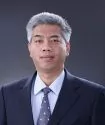From last year, with the improvement of China's industrial technological level as well as the tremendous changes in the international competitive environment, China's patent protection system and patent protection practices have also been changed and adapted to the same. With the imminent drug patent link system, the patent application ability is continuously improved, the patent judicial protection system is further perfected, the amount of infringement compensation is obviously raised, and the punitive damage standard of deliberate infringement is strongly supported.
The number of patent litigation cases has increased significantly. In 2017, the Chinese courts newly received 213,480 first-instance intellectual property cases and closed 202,970 cases in total, with a rise of 46.04% and 43.13% respectively from 2016, in which 16, 044 cases are related to patent right. In the same period, the intellectual property courts in Beijing, Shanghai and Guangzhou accepted a total of 26,698 IPR cases in the first and second instances, and concluded a total of 22,631 cases. Beijing Intellectual Property Court accepted 1,161 patent administrative litigation cases, with an increase of 5.2% compared with the same period in the previous year, and closed 753 cases, with an increase of 27.2% compared with the same period in the previous year. With a magnificent scale in creation and application of various types of intellectual property rights and enhanced values of some intellectual property rights, there are intellectual property disputes that are prone to occur frequently, while the supply side of non-litigation dispute resolution mechanisms is insufficient, so that the rigid demand for judicial protection is continuously on the rise.
The intellectual property tribunals have been successively founded, to make the patent judicial trials more specialized. After the Supreme People's Court summarized and promoted the practical experience of the intellectual property courts in Beijing, Shanghai and Guangzhou. Last year, it was approved to establish the intellectual property specialized trial tribunals for cross-regional jurisdiction in 11 cities including Nanjing, Suzhou, Wuhan, Chengdu, Hangzhou, Ningbo, Hefei, Fuzhou, Jinan, Qingdao and Shenzhen, so as to enhance the unification of standards, scales and quality of verdict, and provide better verdict guidelines for the creation and application of intellectual property
The technical investigator system has been introduced in patent litigation, to make the patent infringement litigation trials more specialized. In the trial of patent cases, the court often needs to identify a number of technical facts, and to conduct in-depth research and comparison of technical solutions. With substantial involvement and great difficulty in specialized technology, how to overcome the technical obstacles in the identification of facts is a key point that has long harassed the enhancement of the quality and efficiency of trials. In response to this practical problem, the Chinese courts explored to establish the system that the technical investigator neutrally performs duties to assist in the trial, and appointed a number of technical investigators with professional technical titles of medium and above, who were respectively from multiple channels such as enterprises and institutions, universities, scientific research institutions, national patent agencies, and patent agent associations. Thus, the "four-in-one" mechanism jointly participated by professional people's jurors, technical investigators, expert assistants, and judicial appraisal agencies for identifying technical facts is constructed to assist the judges in cracking technical doubts, and clearing the technical obstacles for impartial trial of the cases.
The patent link system that the patent infringement litigation taking place during the listing approval of drugs will have certain impact on the approval of generic drugs has been established. In view that the drugs in the process of listing approval may not be examined for patent infringement, the original drug research enterprise has to resort to legal means to restrain the infringement after the listing of the drugs of the opponent. However, restricted by the drawbacks of small infringement damage amount and difficult enforcement under the current patent system in China, such right protection actives are usually almost in vain. As stipulated in the "Opinions on Deepening the Reform of the Review and Approval System to Encourage the Innovation of Drugs and Medical Instruments" issued by the Chinese government, in order to protect the legitimate rights and interests of patentees, reduce the patent infringement risks of generic drugs and encourage the development of generic drugs, we explore to establish the drug review & approval and drug patent link system. When an applicant for drug registration submits an application for registration, he or it shall state the relevant patent involved as well as its ownership status, and notify the relevant drug patentee within the specified time limit. Where there is a dispute over the patent right, the parties concerned may file a lawsuit with the court without aborting the technical review of the drugs during the period. For drugs that have passed technical review, the food and drug supervision department shall make a decision on whether to approve the listing according to the court's effective judgment, ruling or mediation; if the effective judgment, ruling or mediation is not obtained within certain time limit, the food and drug supervision department may approve the listing. According to the aforementioned provisions, after the receipt of the notification from the drug listing applicant, the relevant drug patentee who believes that its patent right has been infringed may bring a patent infringement lawsuit to the judicial authority, which to a large extent discourages the generic drug manufacturer to employ the "Bolar exception" to apply for drug listing before the drug administration department. The establishment and improvement of the drug patent link system may also significantly reduce the time for the drug patent expiration and the drug listing in the near future.
The patent infringement compensation system has been further perfected, which greatly enhances the amount of compensation. There are always such problems as difficult investigation and evidence collection and low amount of compensation in patent infringement. According to the current patent law, the compensation first follows the "bridge principle", which is to bridge all the losses of the patentee and is not punitive to the infringer. The revised patent law is expected to stipulate that, where the patent right is intentionally infringed, the court may raise the amount of compensation to a maximum of three times according to the circumstances, scale and damage consequences. As long as the patentee can prove that the opponent is present with intentional infringement, for example he or it has infringed once and has lost the case, a punitive damage judgment may be made against the infringer. The people's court may determine the amount of compensation to be more than double and less than three times based on the aforementioned method, according to factors such as the circumstances, scale, and damage consequences of the infringement act. The amount of compensation for the damage shall also include the reasonable expenses of the right holder incurred for stopping the infringing act. The amount of compensation should also include reasonable expenses paid by the right holder to restrain the infringement act. The Patent Infringement Guidelines (2017) issued by Beijing Higher People's Court combines the practical needs and also exploratoryly proposes the idea of punitive damages for "malicious infringement" behavior. It is set forth that, where it pertains to malicious infringement, it is possible to support the plaintiff's appeal within the statutory compensation limit or determine the amount of compensation at a higher level.
In the judicial practice of patent infringement litigation, the magnitude of the compensation for damages to the patentee has increased substantially. For example, in the case of Beijing Watchdata System Company v. Hengbao Co., Ltd. for the infringement of patent rights, Beijing Intellectual Property Court judged that the defendant compensated for economic losses of 49 million RMB and legal fees of 1 million RMB, which is the highest amount of damage ever judged since the establishment of the court, and also for the first time explicitly supports the timing charge of an attorney in the judgment. Also, in the case of LG v. NEC Corporation for the patent for invention titled "SPINDLE MOTOR", Beijing Intellectual Property Court supported the right holder's compensation request and reasonable expenditure of nearly 4 million RMB; in Qingdao CO-NELE's case for the patent for utility model titled "HIGH-EFFICIENCY TRANSMISSION DEVICE FOR PLANETARY STIRRER", supported the right holder's compensation request and reasonable expenditure of 3.6 million RMB. In the application of statutory compensation cases, a discretionary compensation mechanism that conforms to the law of the market and meets the requirements for protection of patent rights has been gradually established, so that the amount of compensation for damages matches the market value of the patent right, so as to adapt to the contribution rate of the patent right to the profit of the infringement behavior.
The content of this article is intended to provide a general guide to the subject matter. Specialist advice should be sought about your specific circumstances.

